Handwriting Games for Kids
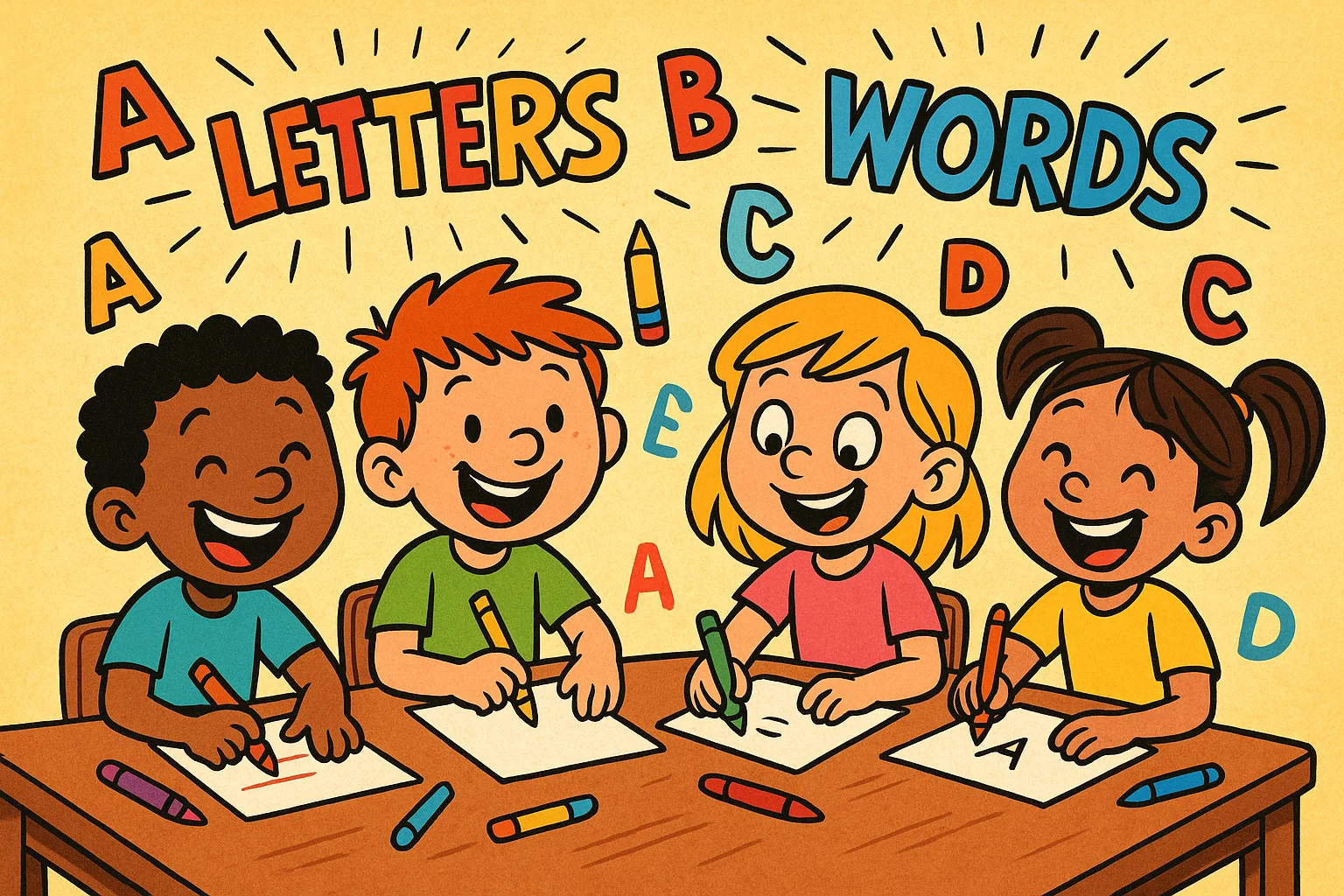
Is your child struggling to hold a pencil, or does handwriting practice feel like a chore? You’re not alone. Developing writing skills is essential, but it doesn’t have to be frustrating. By turning practice into playful, low-pressure activities, learning becomes enjoyable and effective. This guide offers a wide range of handwriting games—recommended by educators and occupational therapists—that help children improve letter formation, legibility, and fine motor skills while having fun.
Benefits of Handwriting Games
Turning writing into a fun game is much more than just a motivational trick; it’s a developmentally sound approach that leverages a child’s natural drive for play. The benefits extend far beyond neat letters, fostering skills critical for overall academic success.
Fine Motor Skill Improvement
Handwriting is a complex task that requires the coordination of many small muscles in the hands and fingers. Fine motor skills are the foundation of this process, and writing activities are the perfect training ground. When kids engage with well-designed games, they naturally enhance:
- Dexterity: The quick, precise movements of the fingers needed to form letters.
- Pencil Grip: Strengthening the arches of the hand and the muscles that control the correct grip.
- Visual Motor Integration: The ability to use visual information to guide their movements, which is essential for tracing and copying letters.
Boosting Memory and Focus
Did you know that penmanship development involves cognitive skills, too? Writing by hand activates more parts of the brain than typing, which aids in memory retention. When a child is actively engaged in a handwriting game, their focus sharpens. Activities that involve learning letter formation or writing words in a time-sensitive way naturally demand sustained attention. This helps build stronger visual memory and visual perceptual skills, which are required for fluency.
Building Writing Confidence
A child who struggles with penmanship often becomes a reluctant writer, leading to low self-esteem in academic settings. By incorporating educational games into their routine, you provide a low-stakes environment for them to practice and succeed. The fun and achievable nature of these activities reduces anxiety and builds confidence in writing skills. When they can successfully write each letter neatly, they are more likely to enjoy school and express themselves freely.
Choosing Handwriting Games
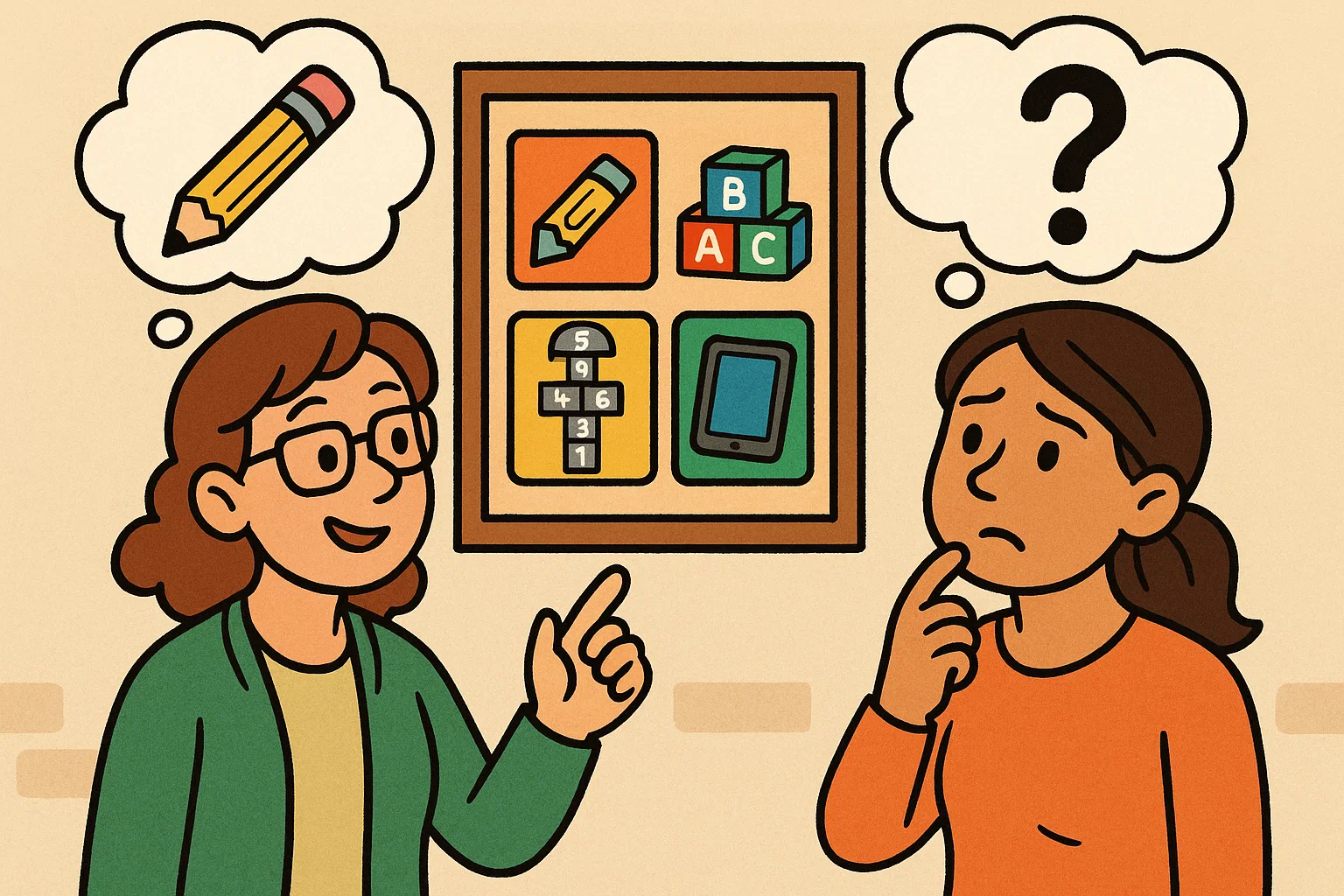
Selecting the right game depends heavily on your child’s developmental stage and current writing ability. A one-size-fits-all approach simply doesn’t work. The goal is to provide just the right challenge—not too easy to be boring, and not so hard that it causes frustration.
| Age Group | Focus Area | Recommended Game Type | Key Skills Targeted |
| Ages 3–5 | Pre-writing, Gross Motor | Sensory, Tracing, Big movements | Pencil grasp, Letter recognition, Pre-writing strokes |
| Ages 5–8 | Letter Formation, Legibility | Pencil and paper games, Structured activities | Spacing, Size consistency, Uppercase and lowercase letters |
| Ages 9–12+ | Fluency, Speed, Style (Cursive) | Word-based strategy games, Copying letters challenges | Visual discrimination, Organization, Functional skill |
Games for Preschoolers
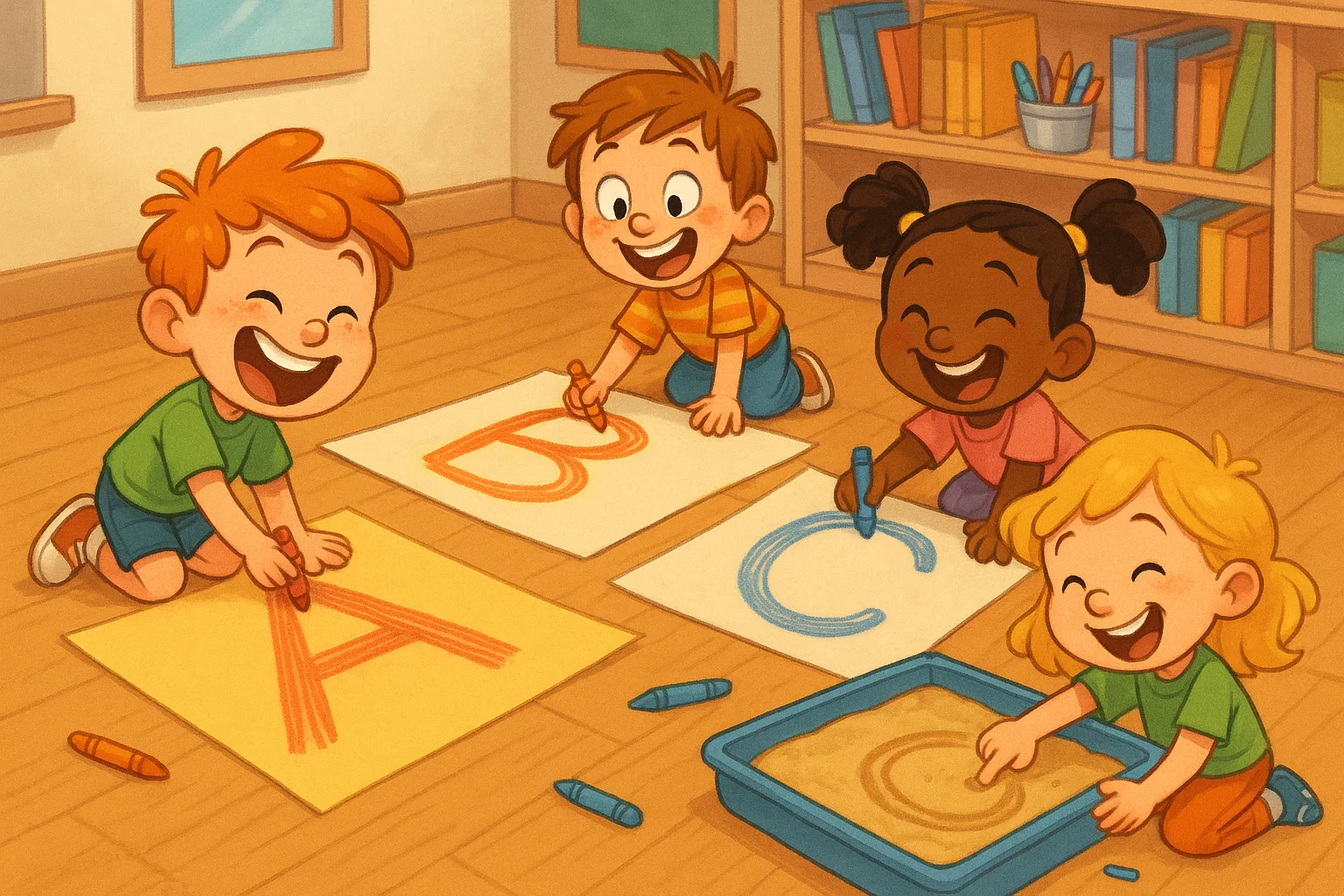
For children just beginning their handwriting development, the focus isn’t on perfect neat writing but on developing pre-writing skills.
- Tactile and Multi-sensory: Using fingers to trace letters in sand or shaving cream.
- Gross Motor Fun: Activities like Alphabet Hopscotch where they jump to the correct letter.
- Large-Scale Drawing: Using chalk on a sidewalk or crayons on a large easel to build arm and shoulder strength.
Games for Elementary Children
This is when formal penmanship practice truly begins, centering on letter formation and consistency. This age group benefits from structure combined with a fun competitive edge.
- Board games like adapted Jenga where kids must write the letter or word on a card before taking a block.
- Worksheets disguised as treasure maps or detective puzzles.
- Engaging activities that involve completing a picture by correctly writing a sequence of lowercase letters or words.
Games for Older Children and Teens
Even older kids sometimes need to work on handwriting skills, especially when transitioning to cursive or improving speed and organization. Educational games that use language and strategy are great here.
- Word scramble challenges or modified versions of classic board games like Boggle or Scattergories that emphasize quick, legible writing.
- Designing an aesthetically pleasing booklet or a fun calligraphy challenge.
- Creating comic strips, which requires both quick sketching and legible text.
Pencil and Paper Handwriting Games
These classic activities require minimal setup and are incredibly effective for focusing on the mechanics of writing, such as spatial orientation and size consistency.
Alphabet Race
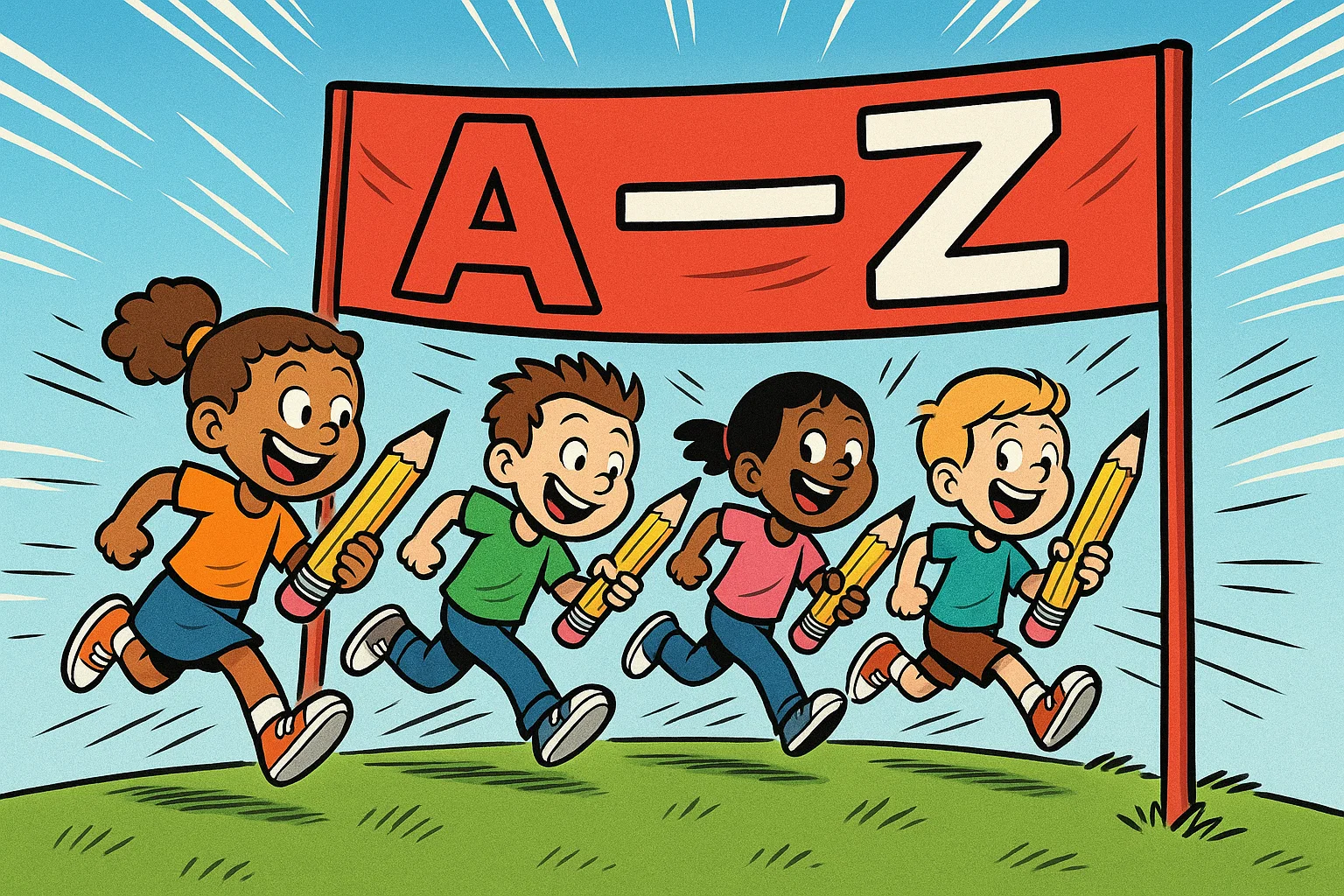
A simple, timed challenge. Give your child a piece of paper and ask them to write the alphabet (both uppercase and lowercase letters) as quickly and neatly as possible.
- Focus: Speed and legibility.
- Twist: Introduce a die. The number rolled determines how many times they must write a specific letter before moving on.
Handwriting Bingo
Create Bingo cards with different lowercase letters, blends, or short words. Call them out, and have your child write the item on a separate piece of paper before crossing it off the Bingo card.
- Focus: Auditory processing and letter recognition combined with practice.
- Tip: Use graph paper to help them maintain consistent size and spacing.
Sentence Builders
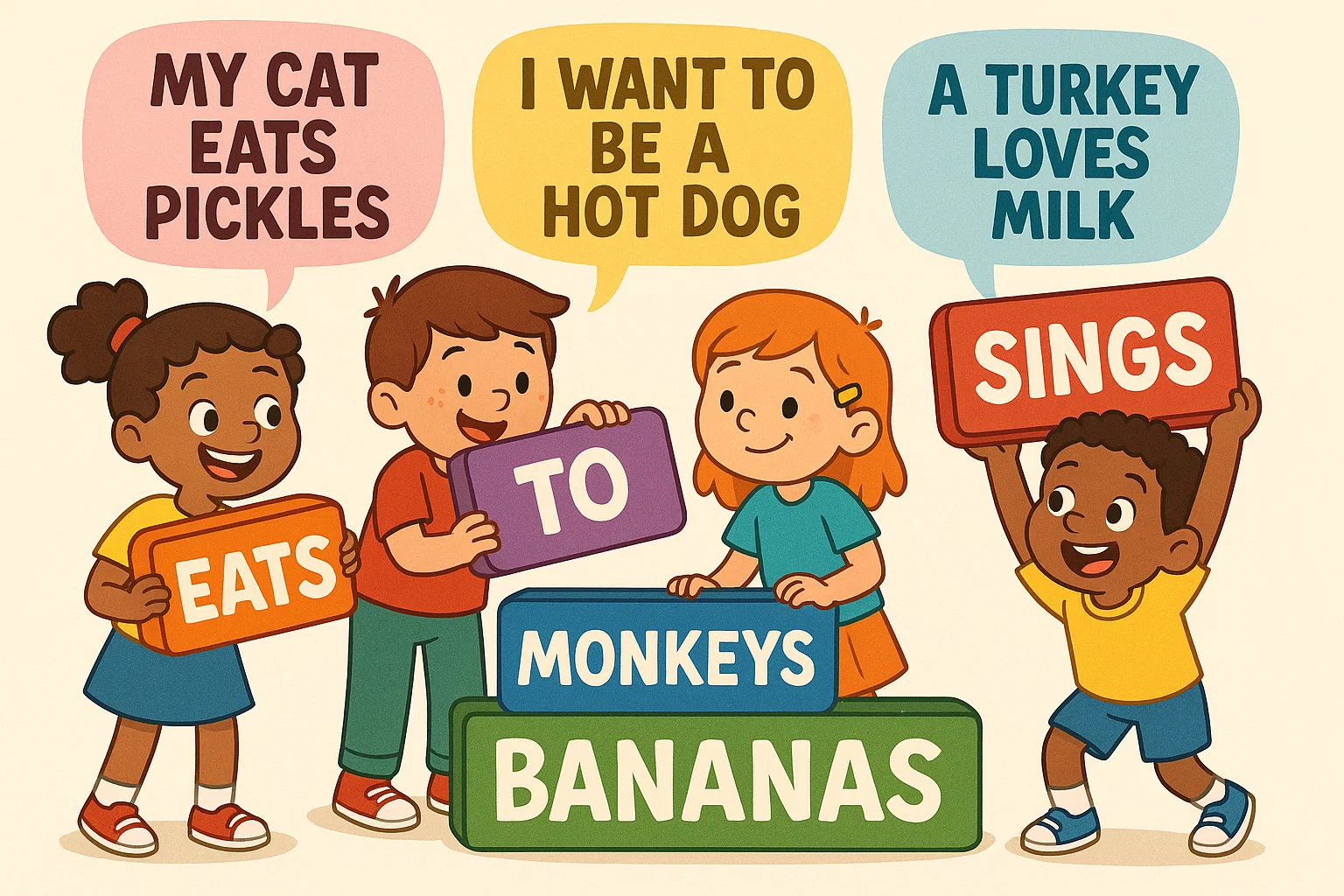
Use pre-cut word cards or write simple words on slips of paper. Have the child randomly select a few words and then write a grammatically correct sentence using all of them.
- Focus: Connecting individual letter formation to functional writing skills.
- Variation: Have them write the word on their paper first, then arrange the slips to form the sentence.
Trace and Copy Exercises
Start with high-quality “handwriting without tears” templates or simple tracing sheets. Once they successfully trace, they immediately move to an adjacent space to copy letters without the guide.
- Focus: Developing visual-motor skills and transitioning from supported to independent writing.
- Authority Tip: According to many therapists and parents, the transition from tracing (simple motor task) to copying (requires visual memory and planning) is a key developmental leap.
Letter Recognition Games
Before a child can master handwriting, they must have solid letter recognition. These activities bridge that gap through fun visual perceptual skills.
Letter Matching Cards
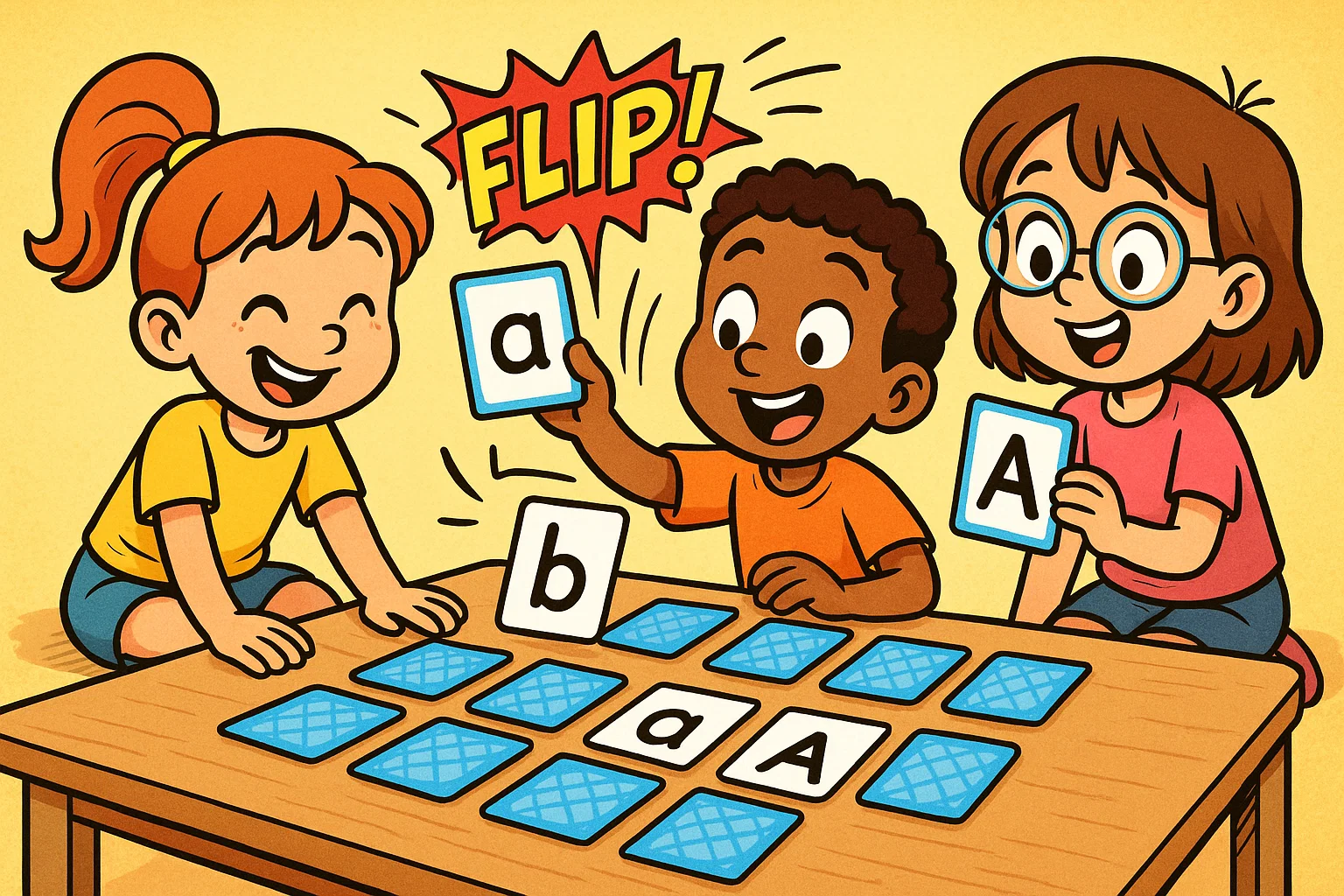
Create two sets of cards: one with uppercase letters and one with lowercase letters. The goal is to match the pairs. When a match is found, the child must then write the letter or say a word that starts with that letter.
Flashcard Frenzy
Quickly flash cards displaying a letter or a simple word. The child’s job is to either call out the name or write it on a small whiteboard before the card disappears. This is excellent for visual memory.
Alphabet Hopscotch
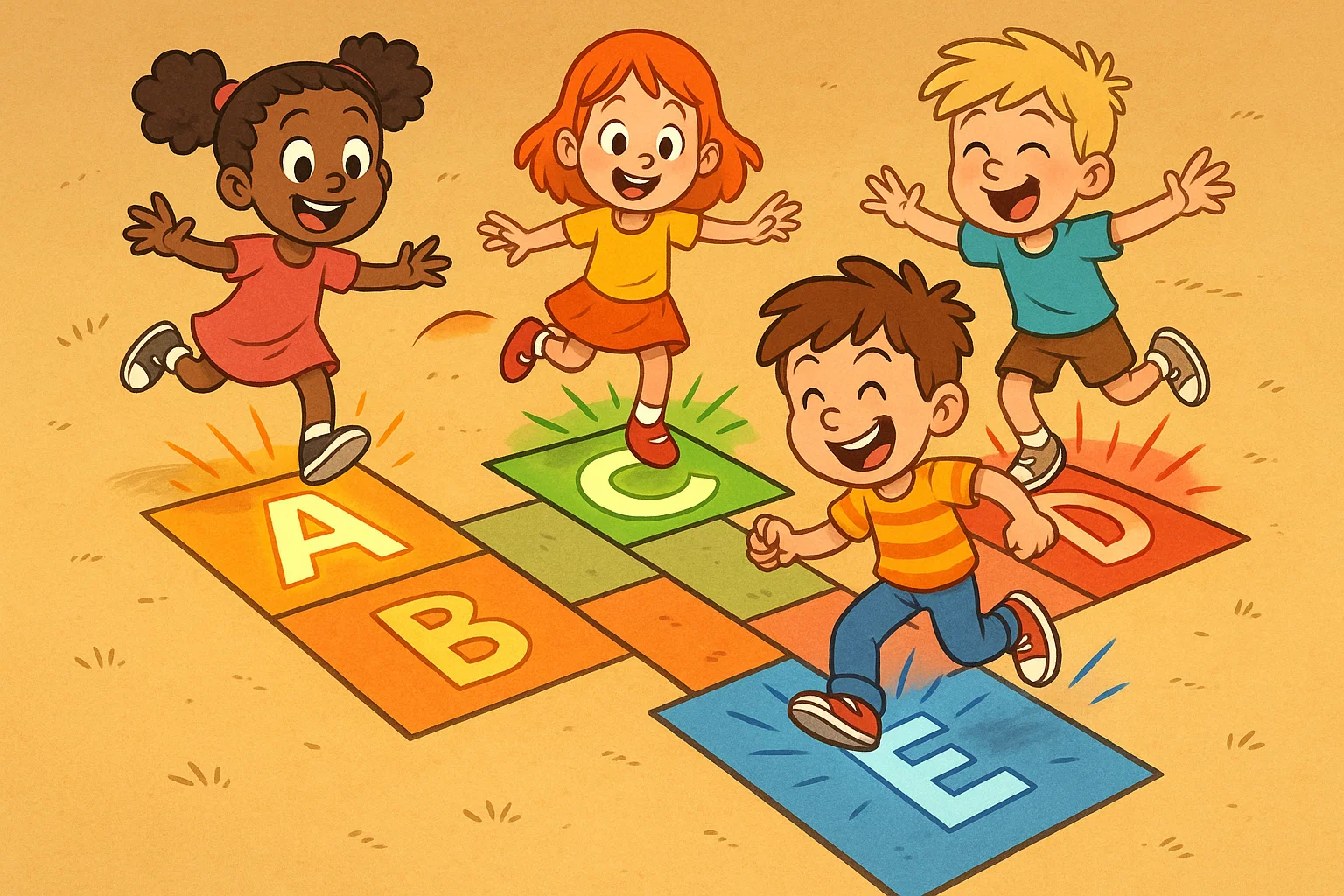
Draw a hopscotch grid, but place uppercase and lowercase letters in the squares instead of numbers. As they jump, they must shout out the letter and correctly form it in the air.
Word Scramble Play
Write a simple word, then scramble the letters on another card. The child must unscramble the letters and then write the word correctly on their paper.
Letter Formation Games
These activities focus on the specific movement patterns required to correctly form letters, a key element of legibility.
Rainbow Writing
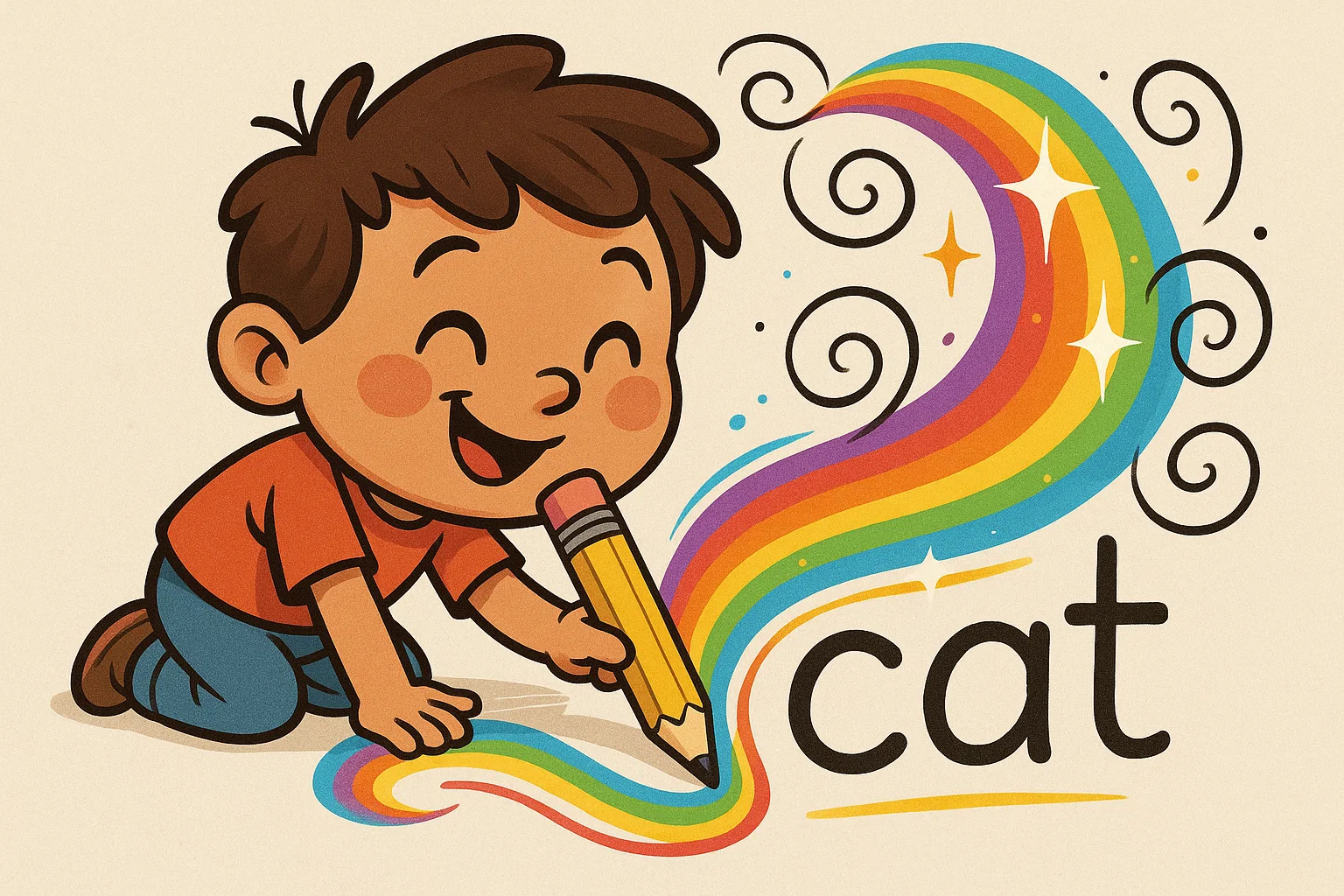
Choose a specific letter or word. The child writes it using one color. Then, they write over it again with a second color, and a third, creating a beautiful “rainbow” effect.
- Focus: Repetition and motor planning for learning letter formation.
- Tip: The multi-color effect helps motivate kids to do the necessary repetition.
Air Writing
The child stands and uses their whole arm to write a letter in the air. This gross motor activity strengthens the shoulder and arm muscles, which provides the stability required for handwriting.
- Variation: Use a flashlight or glow stick in a darkened room to make the letters “float.”
Tactile Alphabet Cards
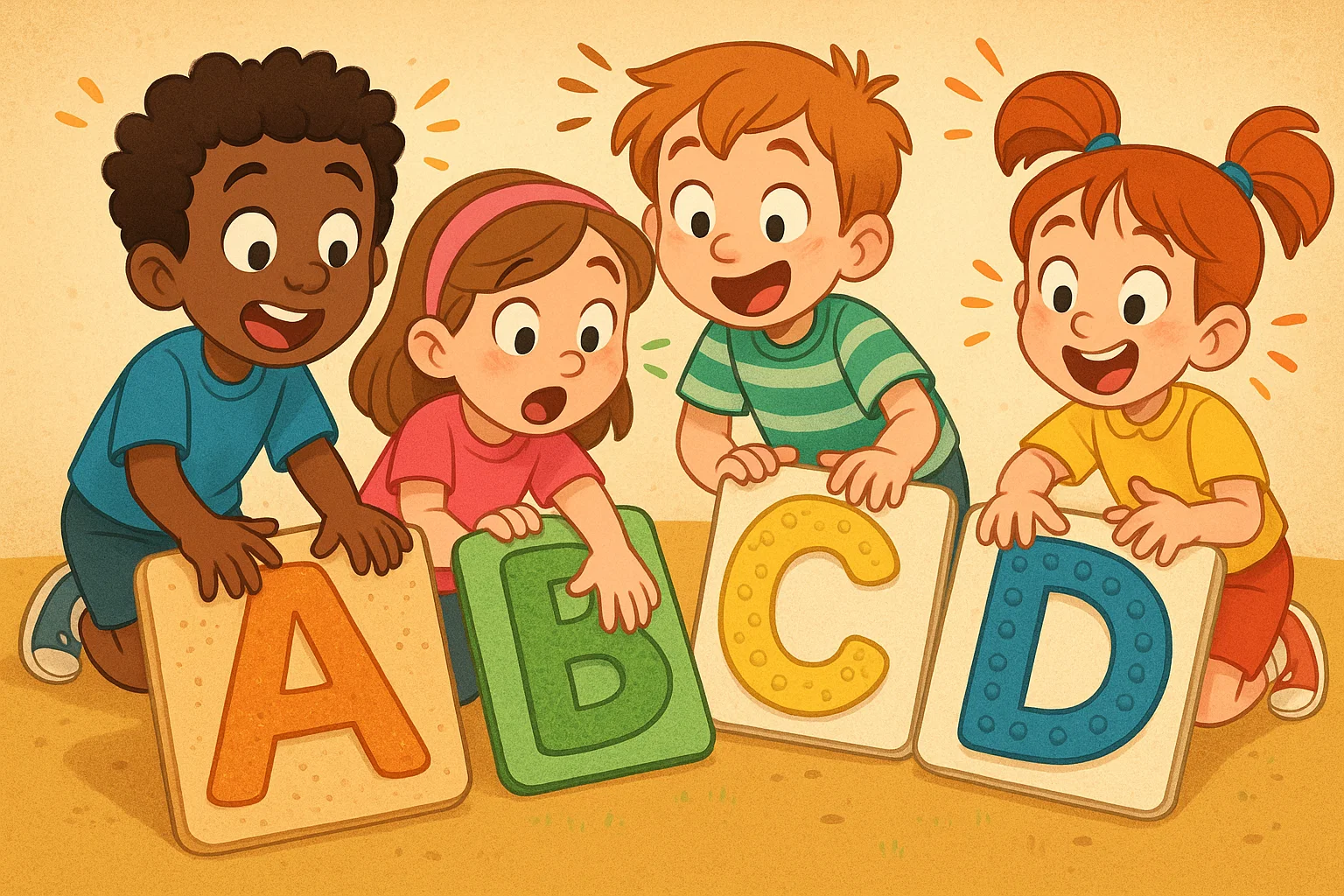
Glue various textured materials (sandpaper, yarn, velvet) onto sturdy cards to represent different letters. The child traces the letter with their finger before attempting to write the letter on paper. This is a powerful multi-sensory input.
Water Painting Letters
Using a paintbrush dipped in water, have your child practice letter formation on a dark surface (like a chalkboard or dark construction paper). The water evaporates quickly, which offers a great, low-pressure opportunity for endless practice writing.
Multisensory Handwriting Games
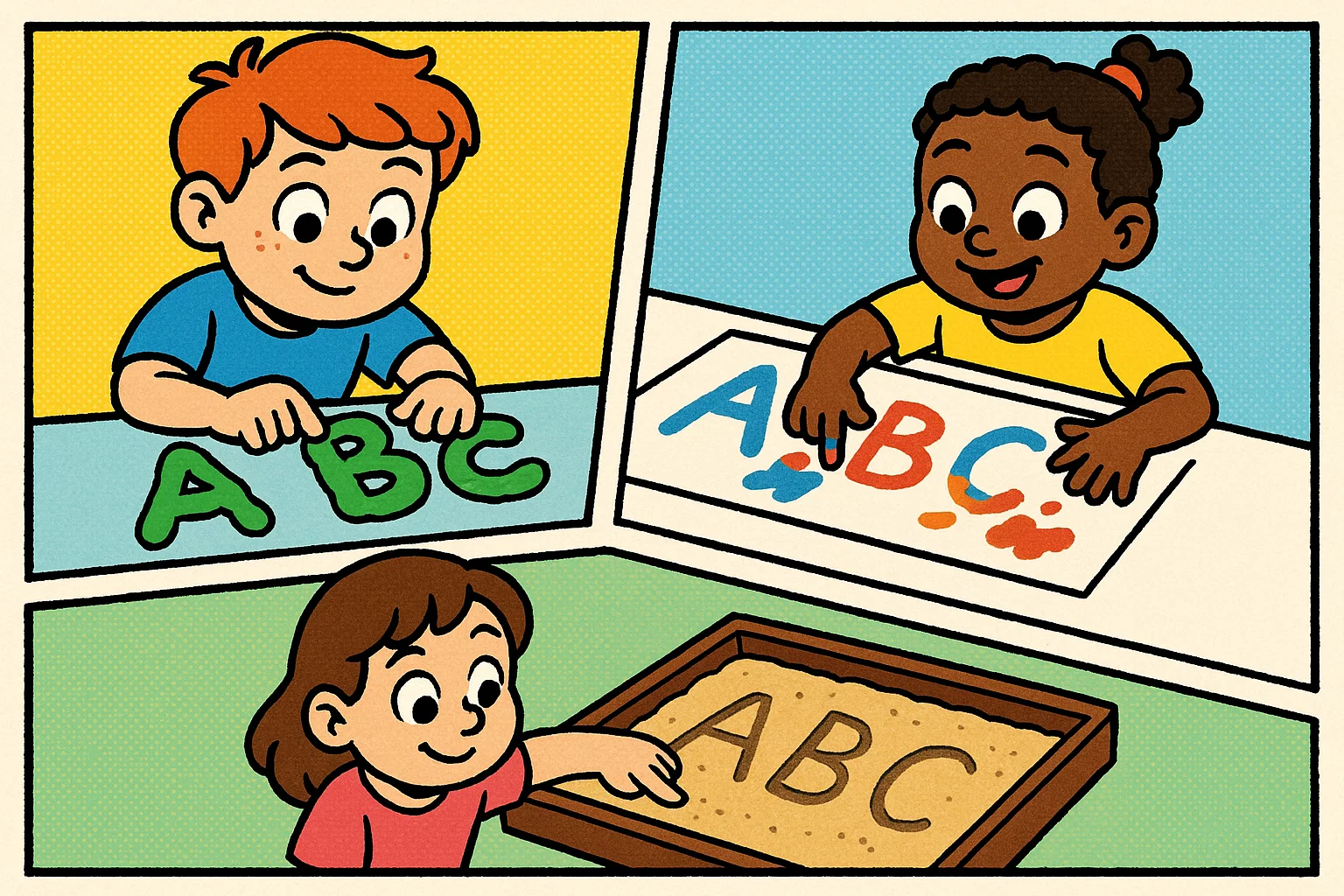
Multisensory learning is a gold standard in the OT toolbox and child development, engaging multiple senses (touch, sight, sound) to build stronger motor and memory pathways.
Playdough Letters
Provide playdough or clay and have your child roll out “snakes” to form letters. This is an excellent exercise for hand strength and finger dexterity. Once formed, they can write the letter next to their creation.
Finger Painting Letters
A messy, but highly effective, way to work on letter formation. Use finger paints to write each letter on a large piece of paper. The tactile feedback is highly engaging and reinforces the motor pattern.
Scratch Art Writing
Scratch art paper is fantastic because it provides visual feedback immediately. When the child writes the letter using a stylus or wooden stick, the dark surface gives way to bright colors, which is highly motivating.
Sensory Writing Trays
Fill a shallow tray with material like sand, salt, rice, or cornmeal. The child uses their finger or a small stick to write the letter in the material. This provides excellent tactile input, helping with learning letter formation.
Creative and Craft Handwriting Games
For children who love art and creation, blending handwriting with crafts can be the key to unlocking their motivation and enjoyment.
Story Drawing and Writing
Have your child draw a picture, and then encourage them to include writing by adding dialogue bubbles, captions, or a short paragraph describing the scene. This connects writing skills to creative expression.
DIY Journals
Have your child design and decorate their own special booklet or journal. The act of creating the book itself makes the pages more valuable, encouraging them to include handwriting through daily entries, sketches, and stories.
Calligraphy Challenges
Introduce basic cursive or fancy lettering styles using markers or specialized pens. This makes practise writing feel like an art form and is particularly engaging for older children and teens who enjoy visual presentation.
Origami or Clay Sculpting Letters
Similar to playdough, but with a focus on precision and following steps. Sculpting letters from clay or folding paper into letter shapes strengthens fine motor skills and spatial awareness.
Handwriting Games by Age Group
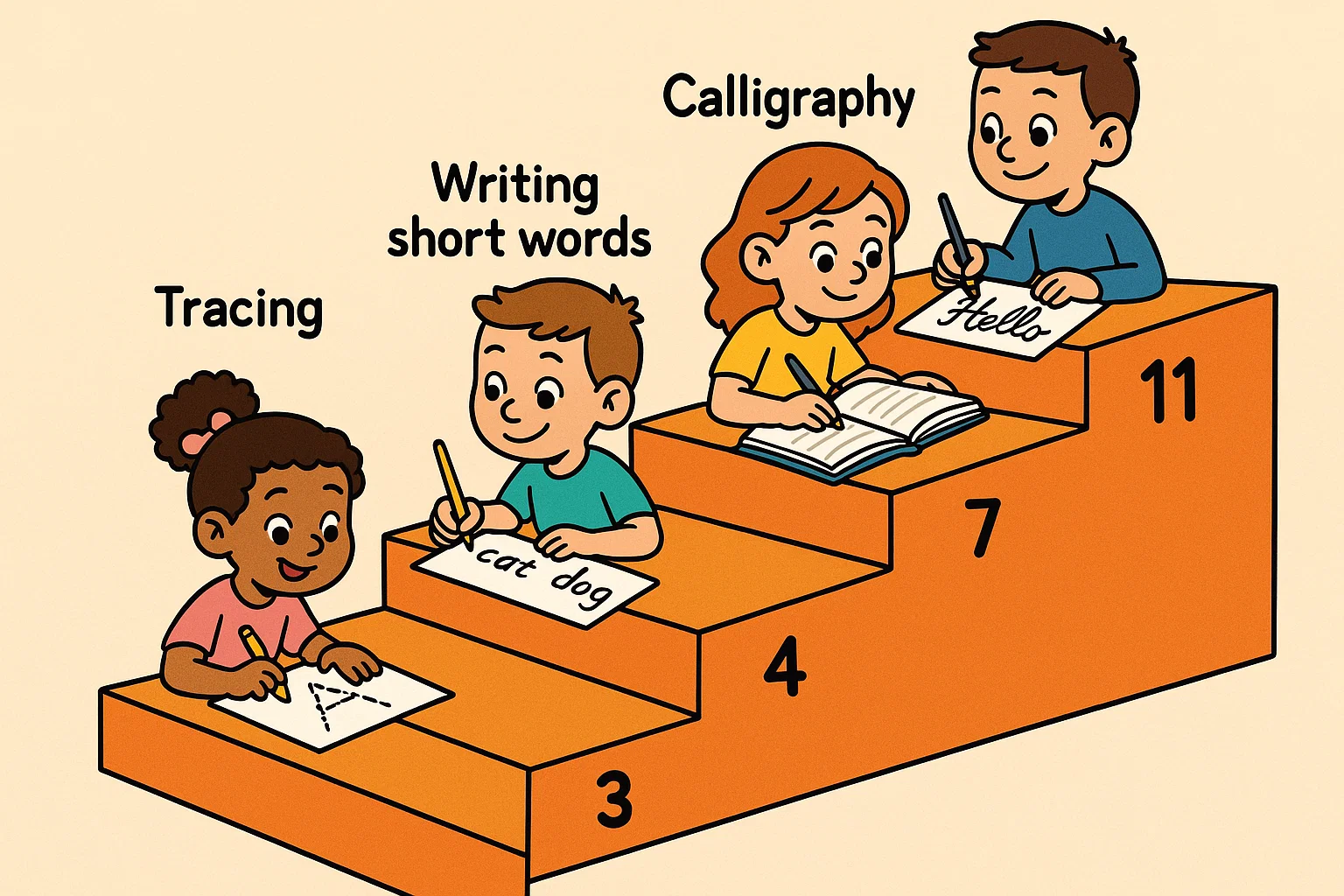
A developmentally appropriate approach ensures maximum benefit and minimal frustration.
Starting to Write (Ages 3–4)
Focus on pre-writing lines (vertical, horizontal, circles). Activities should be large-scale and multisensory.
- Crayon rubbings of textures.
- Drawing big circles and lines on an outdoor wall with a wet sponge.
- Simple tracing activities using a thick crayon.
Early Letter Practice (Ages 4–5)
Focus on uppercase and lowercase letters recognition and the correct start points for letter formation.
- Alphabet beanbag toss: Toss a beanbag onto a letter and then write the letter.
- Using cotton swabs dipped in paint to form small letters.
Handwriting Practice (Ages 5–6)
Focus on size, spacing, and legibility of lowercase letters, which make up most of the text we read and write.
- Handwriting worksheets that use color-coded lines.
- Adapted board games that require players to write the word they land on.
Developing Fluency (Ages 7–8)
Focus on increasing speed and introducing functional skills like paragraph writing and copying letters from a distant source (like a chalkboard).
- Timed word scramble competitions.
- Scattergories adapted to only require writing on pre-printed lines to practice consistency.
Advanced Practice (Ages 9–11)
Focus on stylistic elements, note-taking, and cursive or joined writing.
- Designing a personal monogram or logo that requires neat handwriting.
- Graph paper challenges for precise spacing and diagram labeling.
Identifying Handwriting Problems
Sometimes, a lack of progress in handwriting skills indicates a deeper issue. Knowing the red flags can help you seek support from an OT or a specialist.
Pencil Grip Challenges
An inefficient pencil grip (like a fist grip after age 5) leads to rapid hand fatigue and poor control, making it hard to make handwriting legible.
Posture and Hand Fatigue
If a child is slumped over, pressing too hard, or complains that their hand hurts quickly when they practice their handwriting, it may indicate poor muscle strength or an incorrect grasp.
Letter Reversals
While common in early handwriting development, consistently reversing letters like ‘b’ and ‘d’ or numbers after age 7 suggests that there may be underlying visual perceptual skills issues.
Slow or Messy Writing
If a child knows the material but takes a long time to write it down, or the work is illegible, the motor aspect of handwriting is interfering with their ability to demonstrate knowledge. This is a common area that the OT toolbox can address.
Digital Handwriting Games and Apps
While pencil and paper are irreplaceable, digital tools can offer highly motivating feedback and engaging platforms for handwriting practice.
Recommended Apps for Preschoolers
Apps that use a stylus or finger to trace pre-writing shapes and uppercase and lowercase letters are great. Look for those that offer instant auditory and visual feedback.
Apps for Older Kids
Focus on apps that turn writing into a challenge, such as quick-write games, digital word puzzles, or tools that let them practice cursive or different fonts.
Gamified Handwriting Practice
Many apps are adapted to include score-keeping, levels, and rewards, which can be great fun and engaging for kids who are already comfortable with a tablet. This makes practicing writing feel like a legitimate fun game.
Balancing Screen Time and Handwriting
It’s crucial to remember that digital practice should supplement, not replace, pencil and paper activities. Use the screen time for short, intensive bursts of practice, and save the bulk of the handwriting practice for traditional materials.
Conclusion – Handwriting Games for Kids and Skill Development
The journey to developing strong handwriting skills doesn’t have to be a battle. By embracing handwriting games, you are providing your child with a fun and engaging pathway to fine motor skills mastery, increased confidence, and overall writing fluency. Whether you use a simple pencil and paper activity like Alphabet Race or a multisensory tray filled with sand, the key is consistency and making the process enjoyable.
Therapists and parents agree that a combination of traditional and digital tools provides the most well-rounded approach. Explore the great ideas in this article and find the fun game that will motivate your child to work on handwriting skills. The functional skill of neat handwriting is an essential life tool, and by making handwriting practice enjoyable now, you’re setting them up for academic success for years to come.
FAQ – Handwriting Games for Kids
What age should kids start handwriting games?
Formal practice typically begins around age 5 or 6, but pre-writing activities should start as early as age 3. Simple games like drawing, coloring, and playdough build the hand strength and dexterity required.
Can handwriting games help reluctant writers?
Absolutely! A common reason for reluctance is frustration with the act of writing. Games reduce pressure by making the task playful. Multisensory activities like finger painting or building letters with blocks can bypass anxiety and quickly motivate children.
How often should kids practice handwriting with games?
Short, frequent sessions work best. Aim for 10 minutes a day, three to five times a week. Focus on quality over quantity, with correct formation during practice.
What are the best materials for handwriting practice?
Variety is key! Use well-fitted pencils or crayons, quality paper, and OT-friendly tools such as:
- Graph paper for size and spacing.
- Cotton swabs and paint for fine motor control.
- Stylus and tablet for digital practice.
- Tactile materials like sand and playdough for multisensory input.
